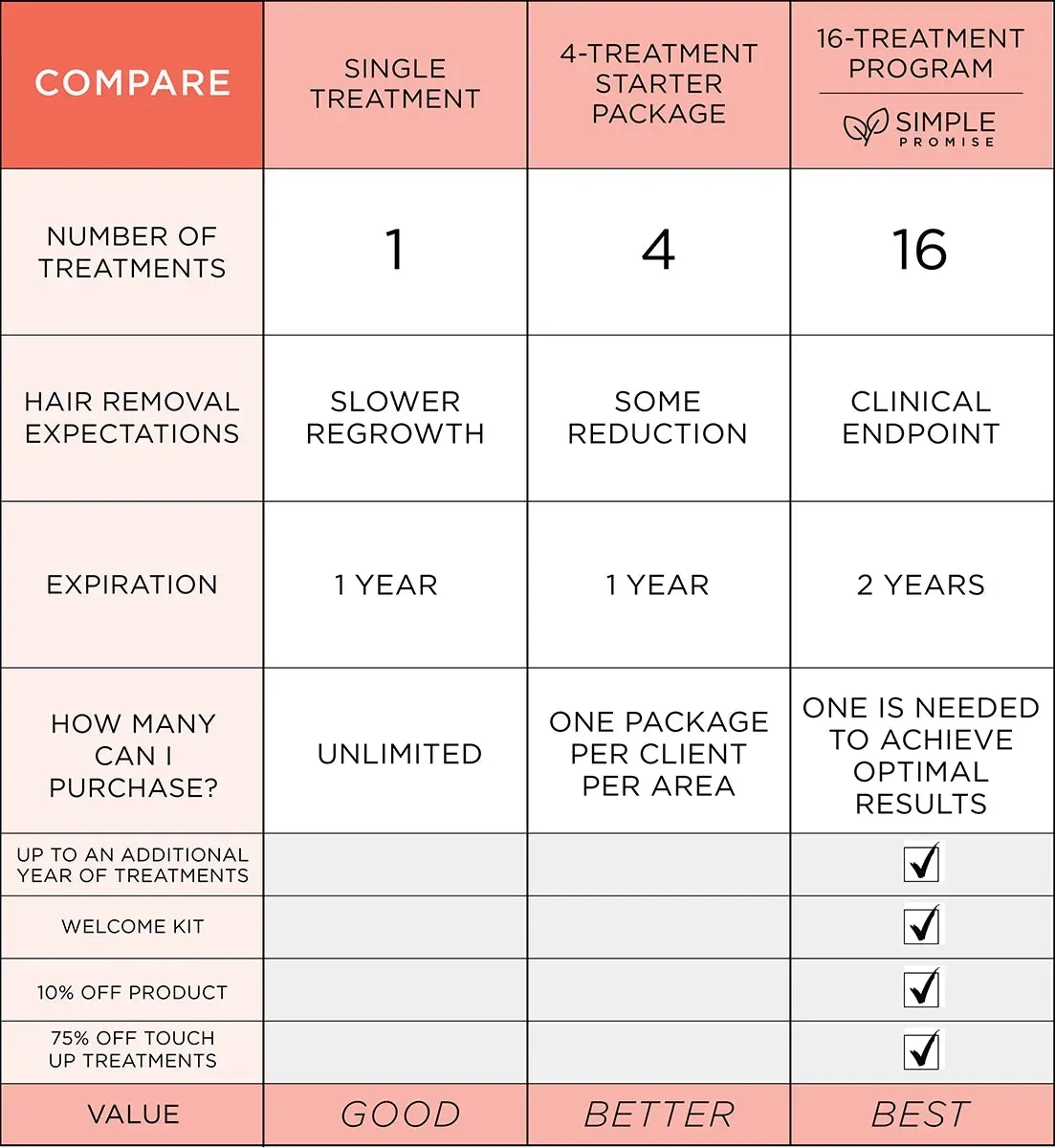Table of Contents
Let's be real. Dealing with unwanted hair down there can be a constant hassle. Shaving leads to bumps and stubble way too fast. Waxing? Ouch, and the results don't last forever either. It's enough to make you wonder if there's a better way to achieve that smooth, confident feeling. That's where Brazilian laser hair removal comes into the picture, offering a longer-lasting alternative that many people swear by.
Brazilian Laser Hair Removal: What to Expect Session by Session

Brazilian Laser Hair Removal: What to Expect Session by Session
The Beginning: Sessions One and Two
Stepping into your first Brazilian laser hair removal session feels like a big step, and frankly, you might not see dramatic results right away. Think of these initial appointments as laying the groundwork. The laser targets pigment in the hair follicle, and it's most effective on hairs that are actively growing. Since not all hairs are in this phase at the same time, the first couple of sessions primarily reduce the density of the actively growing hair.
You'll likely notice some shedding in the days following the appointment – those treated hairs are just pushing themselves out. It might look a little patchy, which is totally normal. Any discomfort during the session is usually brief, often described as a quick snap or warm sensation. It's definitely less drawn-out than waxing, that's for sure.
Midway Point: Sessions Three to Five
By the time you hit sessions three through five, things start getting interesting. You'll see a significant reduction in hair growth. Large patches might stop growing back entirely, and the hair that does reappear is often finer and lighter. This is where consistency in your appointments becomes crucial, directly impacting how often should you get brazilian laser hair removal.
Your technician will likely space these sessions out, typically every four to six weeks, sometimes up to eight weeks depending on your hair growth cycle. Sticking to this schedule is vital because it allows the technician to target the next wave of hair follicles entering their active growth phase. Missing appointments means some hairs might slip through the net and require more sessions later.
- Hair growth becomes noticeably slower.
- Patches of skin appear smooth and hair-free.
- Remaining hair is often thinner and less noticeable.
- Shedding continues after each session.
- Ingrown hairs typically decrease significantly.
Wrapping Up the Series: Sessions Six and Beyond
Most people find that after six to eight sessions, they've achieved a significant reduction in hair – think 80% to 90% less hair overall. At this point, the goal shifts from major reduction to targeting those stubborn stragglers that are still popping up. The frequency between these later sessions might increase as your hair growth slows down further.
It's important to manage expectations; laser hair removal is about *reduction*, not necessarily 100% permanent removal of every single hair follicle forever. Some very fine or light hairs might remain, or you might see minimal regrowth over time. Reaching the end of your initial series means you've treated the area thoroughly during multiple growth cycles, setting you up for long-term smoothness.
Factors Influencing How Often Should You Get Brazilian Laser Hair Removal

Factors Influencing How Often Should You Get Brazilian Laser Hair Removal
Your Unique Hair and Skin Combo Matters
So, you're wondering how often should you get brazilian laser hair removal? It's not a one-size-fits-all deal, like buying a t-shirt. Your personal biology plays a huge role. Laser hair removal works by targeting the pigment (melanin) in the hair follicle. This means people with darker, coarser hair and lighter skin tend to see the quickest results. The laser can easily find the contrast between the dark hair and the light skin.
If you have lighter hair colors like blonde, red, or gray, or if you have a darker skin tone, the laser might have a harder time zeroing in on the follicle effectively. This doesn't mean it won't work, but it might require more sessions spaced perhaps a little differently, or potentially a different type of laser technology altogether. A good clinic will assess your specific hair and skin type during a consultation to give you a realistic picture of the potential timeline.
Hormones Are Sneaky Influencers
Ah, hormones. They dictate so much, and hair growth is definitely on their list. Areas influenced by hormones, like the bikini area (hello, Brazilian!), face, or underarms, can be a bit more stubborn than, say, legs. Hormonal changes due to things like puberty, pregnancy, menopause, or certain medical conditions can stimulate new hair growth even after a series of laser treatments.
This hormonal factor is a key reason why the question "how often should you get brazilian laser hair removal" doesn't always have a simple, fixed answer. While you might get to a point of minimal growth, hormonal shifts can sometimes trigger dormant follicles. This isn't a failure of the treatment; it's just your body doing its thing. It's why some people might need occasional touch-up sessions down the line.
- Hair color and thickness (Dark, coarse hair responds best)
- Skin tone (Lighter skin with darker hair is ideal, but modern lasers work on more types)
- Hormonal levels and fluctuations
- Area of the body being treated
- Individual response to the treatment
- Consistency in attending scheduled appointments
Consistency and Compliance Pay Off
Think of your laser sessions like a workout plan. Skipping weeks or months throws off the rhythm. Your technician schedules appointments to coincide with your hair's growth cycle, aiming to hit as many follicles as possible when they are most vulnerable. If you miss a session, some hairs that were in their active growth phase might cycle out before you get back in, requiring more sessions later to catch them.
Following pre- and post-care instructions is also critical. Avoiding sun exposure, not waxing or plucking between sessions, and keeping the area clean and moisturized helps ensure your skin is in the best condition for the treatment and reduces the risk of side effects. Being diligent with these steps can significantly impact how effectively and quickly you see results, directly influencing how often you ultimately need treatments.
Maintaining Results: Beyond the Initial Brazilian Laser Hair Removal Series

Maintaining Results: Beyond the Initial Brazilian Laser Hair Removal Series
What "Maintenance" Even Means After Laser
so you’ve powered through your initial series of Brazilian laser hair removal sessions. The bulk of the hair is gone, and you're probably feeling pretty good about it. But what happens next? Is it just smooth sailing forever? For most people, it’s not quite a "set it and forget it" situation. Think of the initial series as clearing the forest; maintenance is like pulling the occasional weed that pops up. It’s about catching those few stragglers that might reappear over time.
This isn't because the original treatment failed. Remember, hair grows in cycles, and even with a full series, a tiny percentage of follicles might have been dormant during all your appointments or less responsive. Hormonal shifts or just the natural aging process can also sometimes wake up dormant follicles. So, "maintenance" simply means occasional touch-up sessions to zap any new growth that appears, keeping that smooth result you worked for.
How Often Do You Need a Touch-Up?
Now for the big question regarding the long game: how often should you get brazilian laser hair removal maintenance sessions? This varies wildly from person to person. Some folks might go a year or even several years before noticing anything that warrants a touch-up. Others, perhaps those with stronger hormonal influences or just different biology, might find they want a session every six to twelve months.
There's no fixed schedule handed down from a mountaintop. It really depends on when, or if, you start seeing enough regrowth to bother you. It's not about going back to weekly appointments. It's more about checking in with your body and deciding if a quick session is needed to keep things tidy. Your technician can also give you advice based on what they see, but ultimately, you're the best judge of when a touch-up feels necessary.
- You start noticing scattered hairs returning.
- Patches of previously clear skin show new growth.
- The texture of the remaining hair feels thicker than before.
- It's been a year or more since your last session and you want to be proactive.
Is Brazilian Laser Hair Removal Right For You?

Is Brazilian Laser Hair Removal Right For You?
So, after hearing about the process and how often should you get brazilian laser hair removal sessions, you might be asking yourself, " but is this actually *for me*?" It's a fair question. Brazilian laser hair removal isn't a casual decision; it's an investment in time and money. Generally speaking, it's a fantastic option for people who are tired of the endless cycle of shaving irritation or the pain and temporary results of waxing. If you're looking for a significant, long-term reduction in hair growth, fewer ingrown hairs, and the freedom of not having to think about hair removal constantly, it's definitely worth considering. However, it works best on folks with a decent contrast between their skin tone and hair color – darker hair on lighter skin is the classic ideal, though newer technology is expanding options for various skin types. You also need to be realistic; it's reduction, not guaranteed permanent eradication of every single hair.
- Tired of shaving or waxing?
- Seeking long-term hair reduction?
- Dealing with frequent ingrown hairs?
- Have darker hair and relatively lighter skin (though check with a clinic for other types)?
- Prepared for multiple sessions and potential touch-ups?
Brazilian Laser Hair Removal: The Final Word on Frequency
So, when it comes down to how often should you get brazilian laser hair removal, there's no single, universal answer etched in stone. The standard playbook calls for sessions spaced roughly 4-8 weeks apart during the initial treatment series. This timing aims to catch hair follicles in their vulnerable growth phase. Factors like your hair type, skin tone, hormonal fluctuations, and even the specific laser technology used will nudge that timing one way or another. Consistency is less about hitting some arbitrary calendar date and more about respecting the hair growth cycle. Skipping sessions or waiting too long can mean you're not effectively treating the target hairs, potentially requiring more appointments in the long run. While the goal is significant, long-term reduction, occasional maintenance sessions might be necessary down the road. It's a process, not a one-and-done miracle, and understanding that rhythm is key to managing expectations and achieving the results you're after.